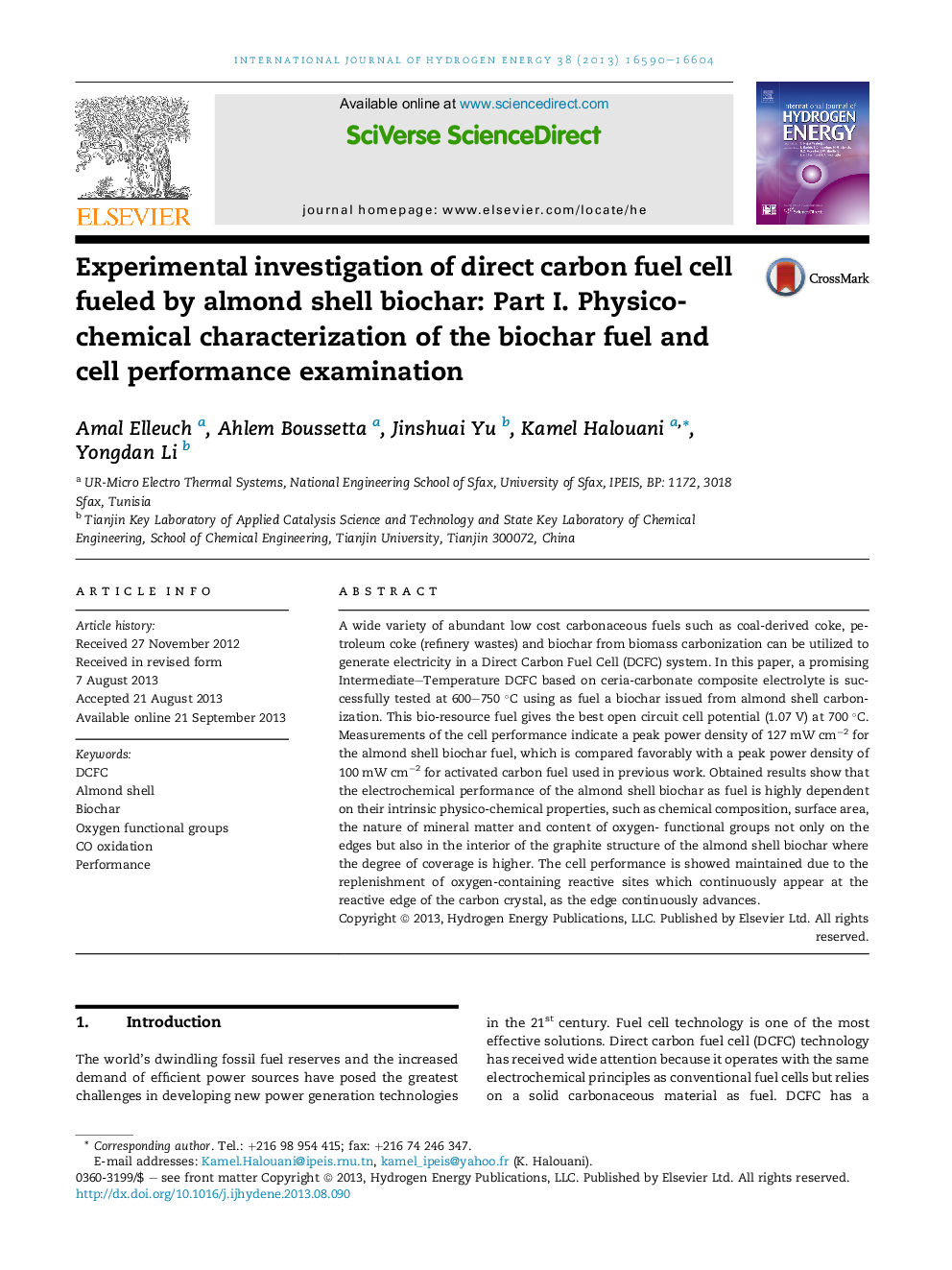| Article ID | Journal | Published Year | Pages | File Type |
|---|---|---|---|---|
| 1274227 | International Journal of Hydrogen Energy | 2013 | 15 Pages |
•DCFC output is sensitive to the physico-chemical properties of the fuel.•Almond shell biochar shows better performance than activated carbon.•Oxygen functional groups play a central role in the carbon oxidation activity.•Degree of coverage of oxygen groups is higher in the interior than at the surface.•CO oxidation reinforce the DCFC performance fueled by almond shell biochar.
A wide variety of abundant low cost carbonaceous fuels such as coal-derived coke, petroleum coke (refinery wastes) and biochar from biomass carbonization can be utilized to generate electricity in a Direct Carbon Fuel Cell (DCFC) system. In this paper, a promising Intermediate–Temperature DCFC based on ceria-carbonate composite electrolyte is successfully tested at 600–750 °C using as fuel a biochar issued from almond shell carbonization. This bio-resource fuel gives the best open circuit cell potential (1.07 V) at 700 °C. Measurements of the cell performance indicate a peak power density of 127 mW cm−² for the almond shell biochar fuel, which is compared favorably with a peak power density of 100 mW cm−² for activated carbon fuel used in previous work. Obtained results show that the electrochemical performance of the almond shell biochar as fuel is highly dependent on their intrinsic physico-chemical properties, such as chemical composition, surface area, the nature of mineral matter and content of oxygen- functional groups not only on the edges but also in the interior of the graphite structure of the almond shell biochar where the degree of coverage is higher. The cell performance is showed maintained due to the replenishment of oxygen-containing reactive sites which continuously appear at the reactive edge of the carbon crystal, as the edge continuously advances.
